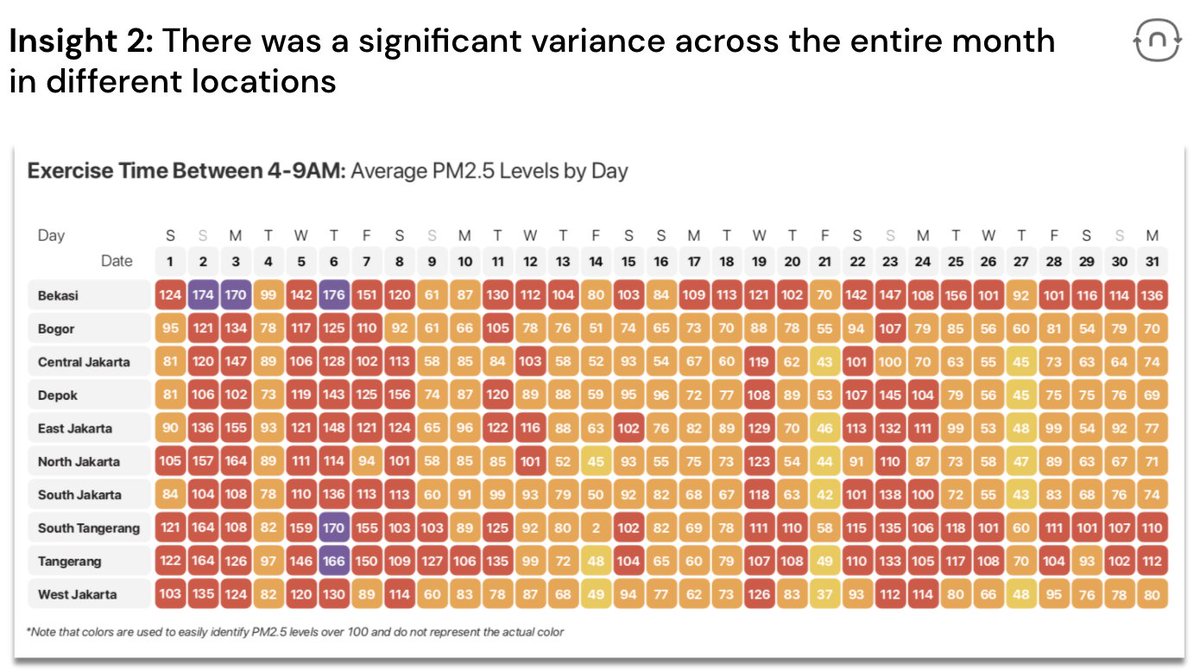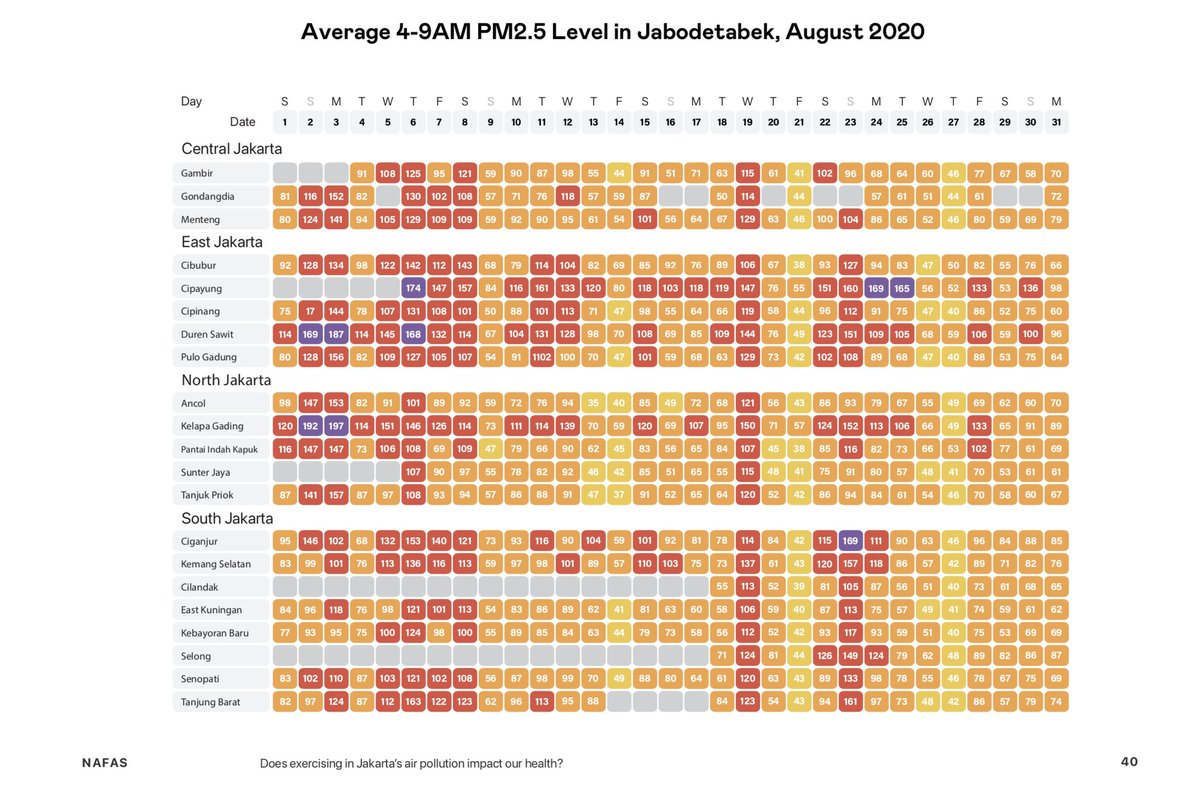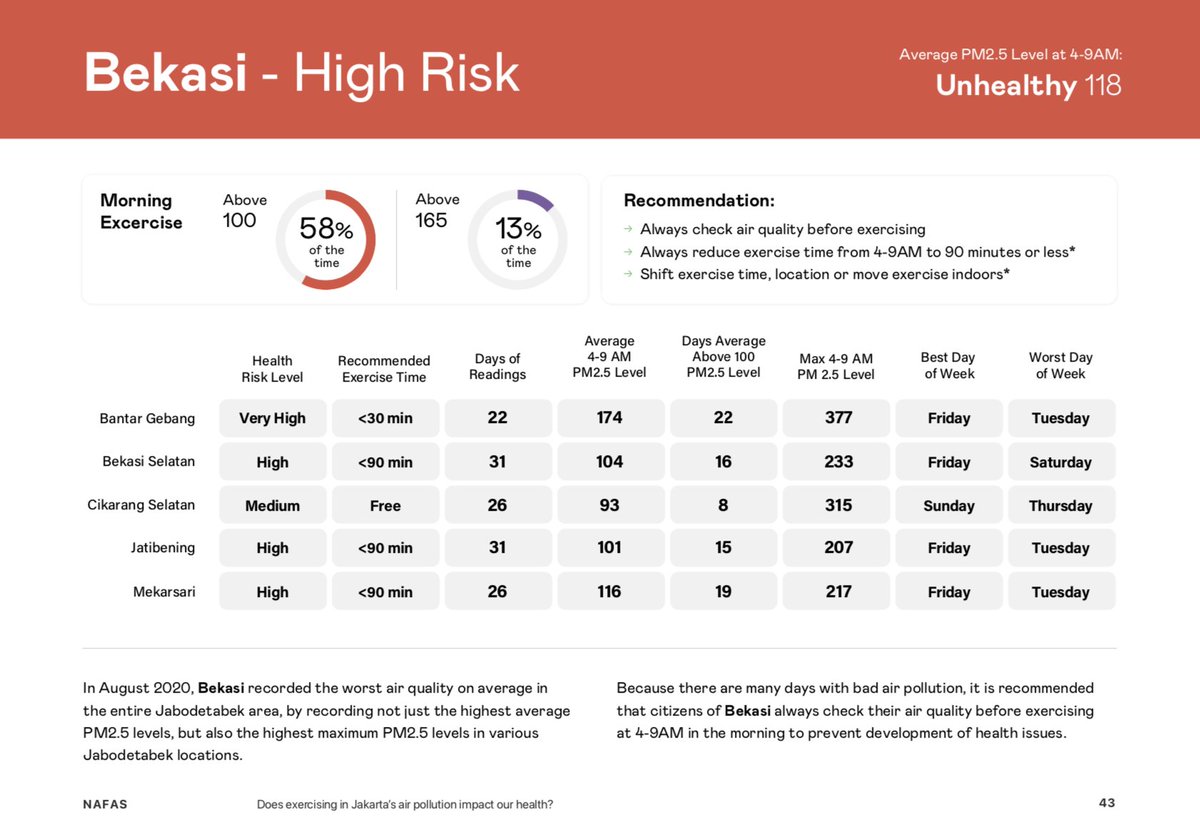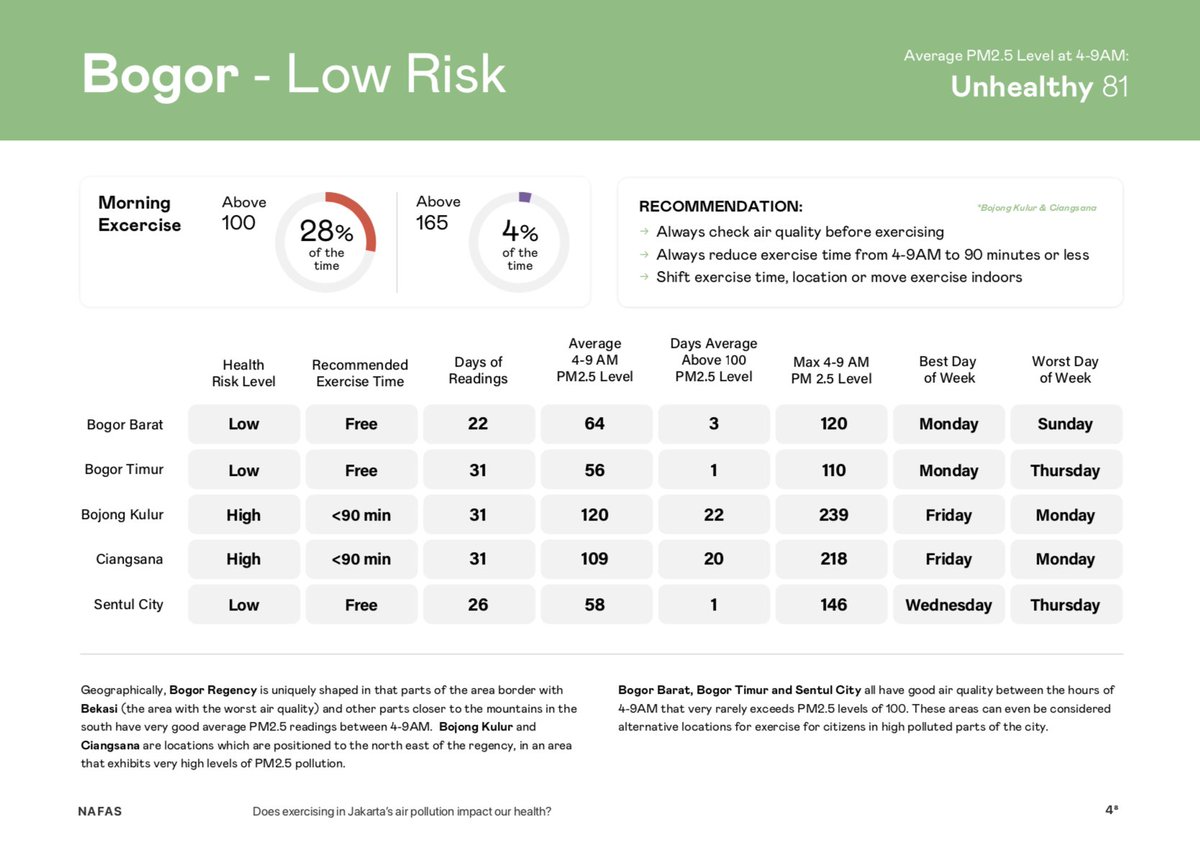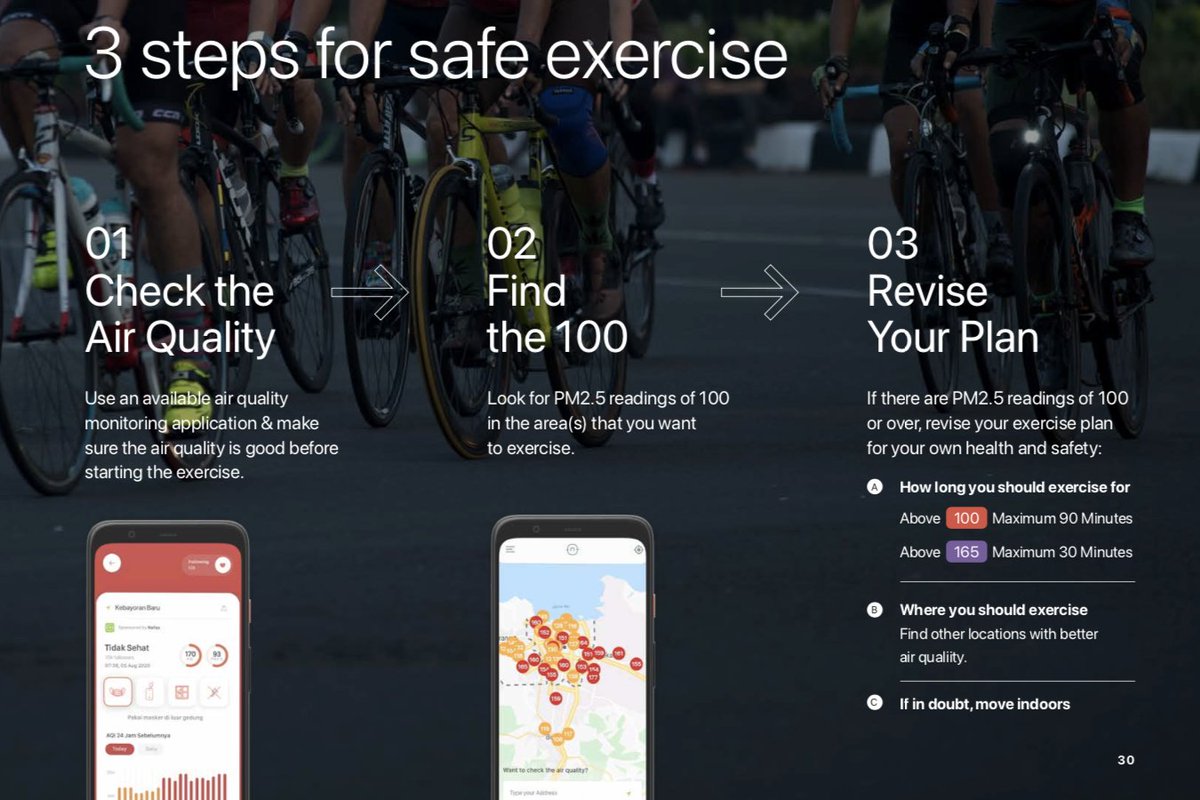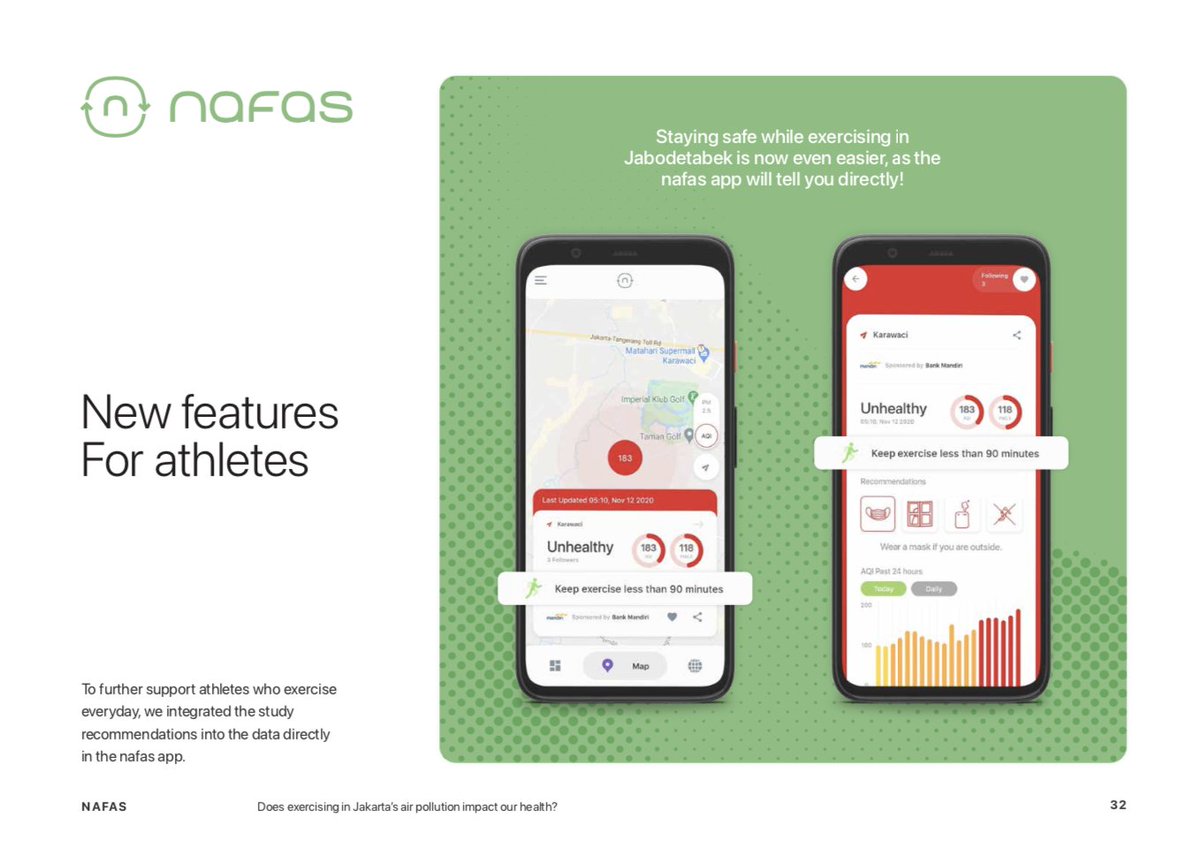Last week we launched a report called "Does exercising in Jakarta& #39;s air pollution impact our health?" which includes a deep-dive into the air quality in Jabodetabek from 4-9AM when most people exercise.
Here& #39;s some of the things we found
 https://abs.twimg.com/emoji/v2/... draggable="false" alt="👇" title="Rückhand Zeigefinger nach unten" aria-label="Emoji: Rückhand Zeigefinger nach unten">
https://abs.twimg.com/emoji/v2/... draggable="false" alt="👇" title="Rückhand Zeigefinger nach unten" aria-label="Emoji: Rückhand Zeigefinger nach unten"> https://abs.twimg.com/emoji/v2/... draggable="false" alt="👇" title="Rückhand Zeigefinger nach unten" aria-label="Emoji: Rückhand Zeigefinger nach unten">
https://abs.twimg.com/emoji/v2/... draggable="false" alt="👇" title="Rückhand Zeigefinger nach unten" aria-label="Emoji: Rückhand Zeigefinger nach unten"> https://abs.twimg.com/emoji/v2/... draggable="false" alt="👇" title="Rückhand Zeigefinger nach unten" aria-label="Emoji: Rückhand Zeigefinger nach unten">
https://abs.twimg.com/emoji/v2/... draggable="false" alt="👇" title="Rückhand Zeigefinger nach unten" aria-label="Emoji: Rückhand Zeigefinger nach unten"> https://abs.twimg.com/emoji/v2/... draggable="false" alt="👇" title="Rückhand Zeigefinger nach unten" aria-label="Emoji: Rückhand Zeigefinger nach unten">
https://abs.twimg.com/emoji/v2/... draggable="false" alt="👇" title="Rückhand Zeigefinger nach unten" aria-label="Emoji: Rückhand Zeigefinger nach unten">
Here& #39;s some of the things we found
Overall, The cost of air pollution in Jakarta is large, but what& #39;s more concerning is a general lack of data on health impact. The last available data was from 2010, nearly 10 years ago.
This posed a challenge for us - how do we correlate the air quality with health risk?
This posed a challenge for us - how do we correlate the air quality with health risk?
The University of Cambridge released a report in 2016 which concluded that long-term exposure to PM2.5 poses a health risk to people exposed to very high concentrations of air pollution.
The team developed a simple scale to help mitigate health risks...
The team developed a simple scale to help mitigate health risks...
The scale was simple:
PM2.5 > 100 ug/m3
After 90 minutes, health risks of air pollution outweigh benefits of exercise
PM2.5 > 165 ug/m3
After 30 minutes, health risks of air pollution outweigh benefits of exercise
What did that mean for 4-9AM in Jakarta?
Here& #39;s the data
 https://abs.twimg.com/emoji/v2/... draggable="false" alt="👇" title="Rückhand Zeigefinger nach unten" aria-label="Emoji: Rückhand Zeigefinger nach unten">
https://abs.twimg.com/emoji/v2/... draggable="false" alt="👇" title="Rückhand Zeigefinger nach unten" aria-label="Emoji: Rückhand Zeigefinger nach unten">
PM2.5 > 100 ug/m3
After 90 minutes, health risks of air pollution outweigh benefits of exercise
PM2.5 > 165 ug/m3
After 30 minutes, health risks of air pollution outweigh benefits of exercise
What did that mean for 4-9AM in Jakarta?
Here& #39;s the data
In August 2020, between the hours of 4 and 9AM, the air quality on average frequently exceeded the 100 ug/m3 limit - meaning that the recommended time to exercise would be below 90 minutes.
 https://abs.twimg.com/emoji/v2/... draggable="false" alt="👀" title="Augen" aria-label="Emoji: Augen">
https://abs.twimg.com/emoji/v2/... draggable="false" alt="👀" title="Augen" aria-label="Emoji: Augen"> https://abs.twimg.com/emoji/v2/... draggable="false" alt="👀" title="Augen" aria-label="Emoji: Augen"> Some places had averages above >165 ug/m3!!!
https://abs.twimg.com/emoji/v2/... draggable="false" alt="👀" title="Augen" aria-label="Emoji: Augen"> Some places had averages above >165 ug/m3!!!
There was significant variance across the month from city to city, and by time of the month.
Note - the data below shows the average PM2.5 level for the entire block of time between 4-9AM.
Maximum hourly readings are higher.
So when is air quality actually good?
Note - the data below shows the average PM2.5 level for the entire block of time between 4-9AM.
Maximum hourly readings are higher.
So when is air quality actually good?
We took a look at the average hourly readings from the entire month, and something surprising emerged (at least for us non-atmospheric scientists).
The best air quality is during the day - which is a bit shocking when you previously thought that day = cars = bad.
The best air quality is during the day - which is a bit shocking when you previously thought that day = cars = bad.
The report is filled with a lot more details including:
- Best day of the week
- Detailed air quality by kecamatan (district) in each of the cities
- Risk index created based on occurrence of air pollution that is above PM2.5 100 ug/m3
- Best day of the week
- Detailed air quality by kecamatan (district) in each of the cities
- Risk index created based on occurrence of air pollution that is above PM2.5 100 ug/m3
So if you love exercising in Jabodetabek in the morning, or just want to see more of the data, here are the links to the reports - dual-language for easy understanding!
Bahasa Indonesia - https://report.nafas.co.id/jakarta-olahraga
English">https://report.nafas.co.id/jakarta-o... - https://report.nafas.co.id/jakarta-exercise">https://report.nafas.co.id/jakarta-e...
Bahasa Indonesia - https://report.nafas.co.id/jakarta-olahraga
English">https://report.nafas.co.id/jakarta-o... - https://report.nafas.co.id/jakarta-exercise">https://report.nafas.co.id/jakarta-e...
There are a few safe steps you can take to exercise outdoors when air quality is bad.
It starts with checking your air quality.
@nafasjkt has over 50 sensors in Jabodetabek to tell you the current air quality.
You can download it here:
https://link.nafas.co.id/4w2G/exercisePJ ">https://link.nafas.co.id/4w2G/exer...
It starts with checking your air quality.
@nafasjkt has over 50 sensors in Jabodetabek to tell you the current air quality.
You can download it here:
https://link.nafas.co.id/4w2G/exercisePJ ">https://link.nafas.co.id/4w2G/exer...
The most recent release of the app includes features made for people who like to exercise, but that& #39;s for another thread :)

 Read on Twitter
Read on Twitter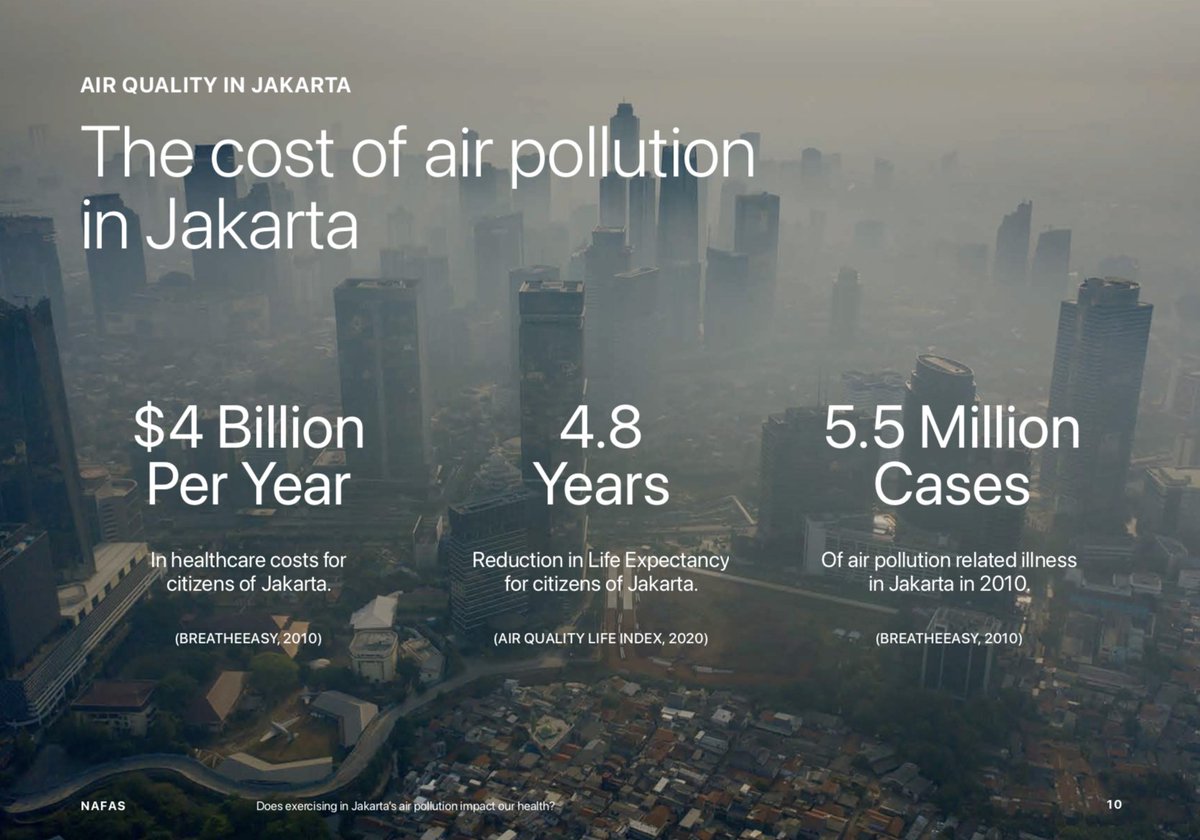
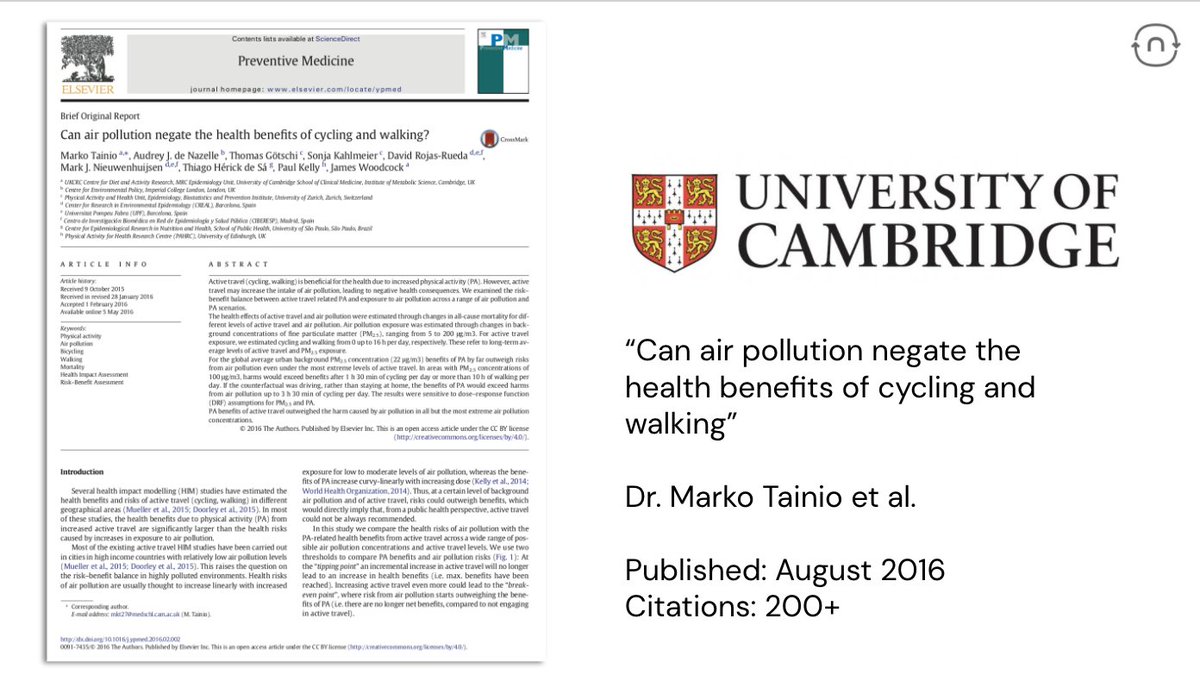
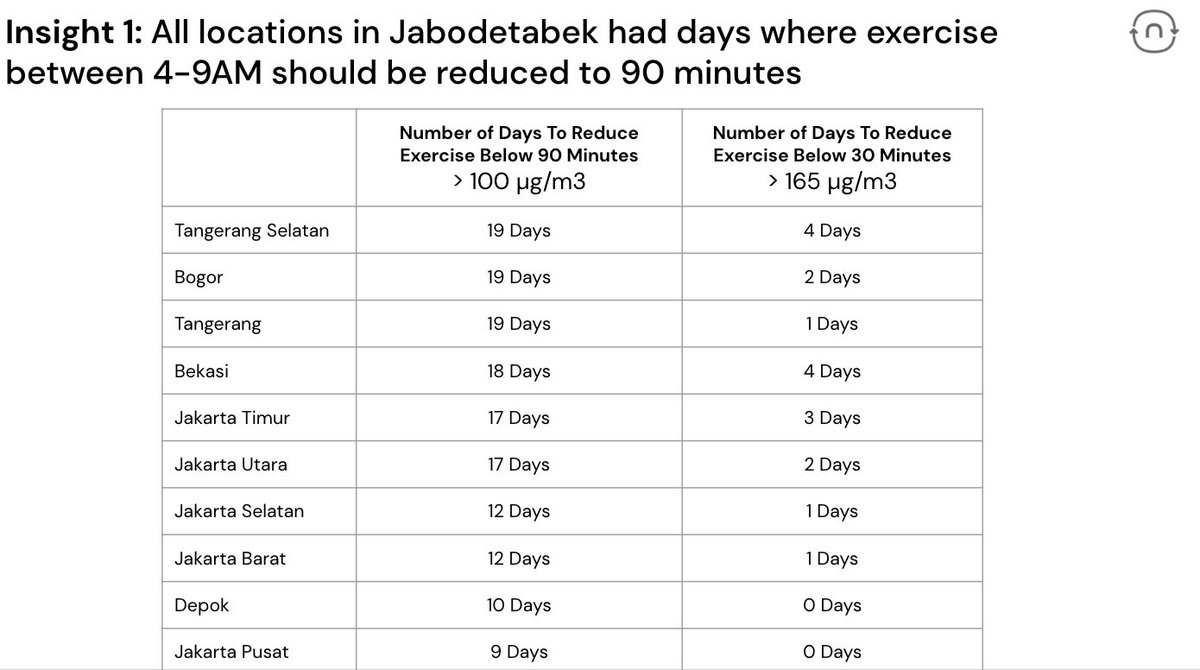 https://abs.twimg.com/emoji/v2/... draggable="false" alt="👀" title="Augen" aria-label="Emoji: Augen"> Some places had averages above >165 ug/m3!!!" title="In August 2020, between the hours of 4 and 9AM, the air quality on average frequently exceeded the 100 ug/m3 limit - meaning that the recommended time to exercise would be below 90 minutes. https://abs.twimg.com/emoji/v2/... draggable="false" alt="👀" title="Augen" aria-label="Emoji: Augen">https://abs.twimg.com/emoji/v2/... draggable="false" alt="👀" title="Augen" aria-label="Emoji: Augen"> Some places had averages above >165 ug/m3!!!" class="img-responsive" style="max-width:100%;"/>
https://abs.twimg.com/emoji/v2/... draggable="false" alt="👀" title="Augen" aria-label="Emoji: Augen"> Some places had averages above >165 ug/m3!!!" title="In August 2020, between the hours of 4 and 9AM, the air quality on average frequently exceeded the 100 ug/m3 limit - meaning that the recommended time to exercise would be below 90 minutes. https://abs.twimg.com/emoji/v2/... draggable="false" alt="👀" title="Augen" aria-label="Emoji: Augen">https://abs.twimg.com/emoji/v2/... draggable="false" alt="👀" title="Augen" aria-label="Emoji: Augen"> Some places had averages above >165 ug/m3!!!" class="img-responsive" style="max-width:100%;"/>
